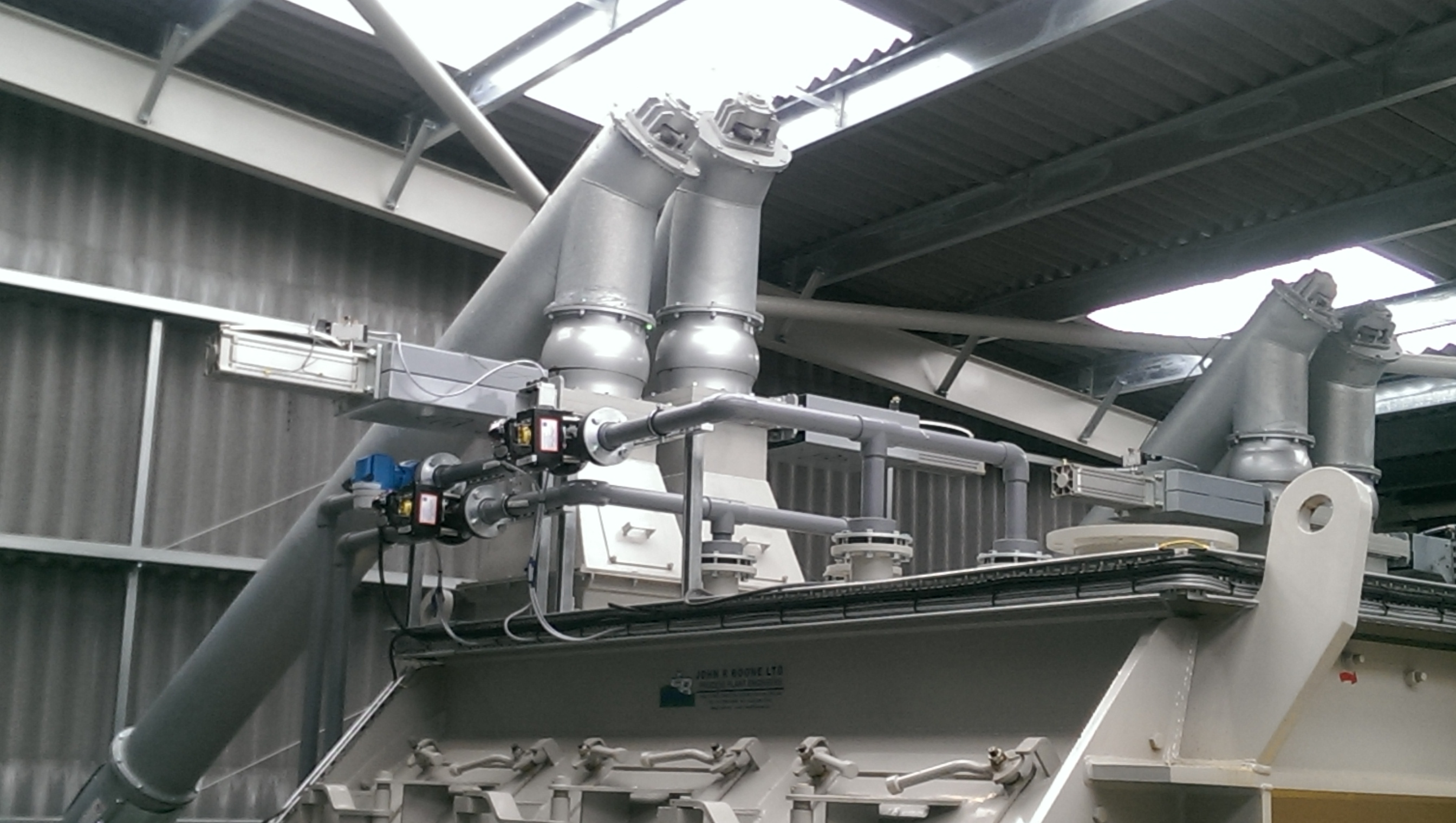Materials in Motion
Most products at some stage of their life during production or
manufacture, utilise materials in powder or granulated form. This is
where the challenge can be for the designers of equipment and processes
to move these types of materials from place to place, horizontally,
vertically or somewhere in between. The conveyor or elevator designer
must consider a multitude of parameters, probably more than twenty in
their pursuit of the most effective solution. Materials in bulk will
almost certainly give rise to dust, additionally the material may be
fragile, it may have sharp edges and wage a war of attrition against the
machinery and itself. The route may involve gradients upwards or
downwards, sharp turns and exposure to the elements. For mixtures of
different sizes of granules sizes, segregation may be a problem, again
needing special thought. The list goes on and on and as research and
technology move the industry forward the number of parameters to
consider is increasing.

However,
with the benefit of more than a century of innovation and development, a
huge range of efficient material movement possibilities now exists. For
long distances, lorries
may be the obvious choice, but not always. The World's Longest
Conveyor Belt is 61 Miles long in Morocco and conveys phosphate from Bou
Craa, a mining town in the interior to ships at the coast. At the other
end of the scale, for medical, pharmaceutical or scientific laboratory
applications belt conveyors about 250mm long and with a width of less
than 50mm will fit the bill perfectly. The Archimedes screw or screw
conveyor had its origins in the middle east and is reputed to have been
used to transport water to the hanging gardens of Babylon. Since then
the screw conveyor has been used for many applications of powders and
granules. Most powder handling systems including some form of screw
conveyor to transport material from one point to another. More recently
the screws have been adapted to provide hydro electric power from the
waters of the UK.
Most of the earliest conveyors were of the belt type, adapted to
serve as elevators by the addition of simple slats or buckets, typically
for use in agriculture. Safety, environmental, efficiency and crucially
production considerations have given rise to the variety of approaches
seen today. A brief visit to the SHAPA website Equipment Finder will demonstrate the extent
of innovation that has taken place, where several member companies
specialise in providing solutions to meet particular needs, great and
small.
visit to the SHAPA website Equipment Finder will demonstrate the extent
of innovation that has taken place, where several member companies
specialise in providing solutions to meet particular needs, great and
small.
Many conveyor types are capable of negotiating turns and
gradients efficiently whilst protecting fragile, hazardous, hygienically
demanding or otherwise difficult to handle materials. This equipment
includes lean and dense phase pneumatic conveyors, either pressurised or
vacuum operated, aeromechanical types and flexible screw conveyors
amongst others. There are robust chain conveyors for lightweight, bulky
abrasive materials such as woodchips, or high capacity screw conveyors
for short straight runs, ideal for hopper and silo discharge duties
moving materials to suitable transfer points. Depending upon the
intended throughput, continuous or batch weighing systems may be
incorporated. For example, load-cell based weighing equipment can
continuously monitor delivery rates and be linked to master controls.
This is a mere snapshot of the science, technology and careful
thought that encompasses conveying and elevating as an industry and
development is continuous as materials to be moved also increase in
sophistication. For further information please visit www.shapa.co.uk or
email your enquiry to info@shapa.co.uk
PDF Version
Visit www.shapa.co.uk or
email info@shapa.co.uk to
discover more benefits of membership or to find technical partners for
your next project.























 visit to the SHAPA website Equipment Finder will demonstrate the extent
of innovation that has taken place, where several member companies
specialise in providing solutions to meet particular needs, great and
small.
visit to the SHAPA website Equipment Finder will demonstrate the extent
of innovation that has taken place, where several member companies
specialise in providing solutions to meet particular needs, great and
small.